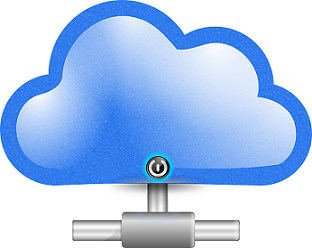User Communities Need Numerous Reports Every Year
In situations where self-service reporting is available or report providers are responsive, even small teams may ask for dozens of custom reports. Larger teams may ask for over a hundred. For software vendors that are serving multiple customers, this problem is compounded further and the user community may need thousands of reports every year.
Keeping Up with Requests Requires Significant Engineering Time
Even in harsh economic times, qualified software engineers are difficult to find and command ever-increasing salaries. Outsourcing does not work well for reporting due to language and time zone barriers. Additionally, reports may contain sensitive information which must remain within the domain of the organization. Reporting demands time, and even a simple customization may take a few hours of work because the developer needs to understand the requirement, load the existing report, analyze the data model, update the model, validate the report with the user and finally publish the report to the web server. Creating new reports from scratch can take even longer. Since developers generally do not understand the data they are working with, it may take a few tries before the report is correct.
Free Reporting Tools are Not Completely Self-Service or Browser-Based
Most vendors provide end-user reporting tools which are designed for intranet environments and behave like desktop applications. They run on a users desktop and require installation. Additionally, they require a direct connection to the database server which is normally not available to users for security reasons. While users can use these tools to generate reports, a developer must first create a model and update the model every time new information is needed. In contrast, a true self-service solution allows users to create and customize reports directly while ensuring that users only see data to which they have access.
The Costs of Developer-Driven Reports
A software vendor, IT organization or solutions provider may serve up to 100 or more customers or departments. Each organization may need between 10 and 100 custom reports per year. Some larger organizations may need well over 100. Let’s assume that a software engineer with good communication skills costs about $100,000 per year after salary, benefits and other expenses. Serving 50 customers that require 50 reports every year each would require three full time engineers dedicated to reporting. For a fraction of this cost, self-service reporting solutions exist that can be implemented in a manner of days.
Time = 50 Customers * 50 Reports Per Year * 2.5 Hours Per Report = 6,250 Man Hours = 3 Man Years
Cost = 3 Man Years * $100,000 = $300,000
Building vs. Buying Self-Service Reporting
Many organizations that understand the true costs of traditional reporting have tried to implement self-service capabilities in-house. Unfortunately such projects are often risky and provide underwhelming results. Providing a full solution with exports, charts, filters, pivots and dashboards requires a significant capital investment. This is a large project, there are numerous development and QA details that involve critical challenges such as PDF rendering, AJAX, data validation, ensuring security and optimizing performance. Implementing a high performance flexible reporting system for an individual application can take as long as 3-5 man years of engineering and QA time. Additionally, it could be one or more years before it gets delivered to customers which creates the potential for a competitor to offer reporting to their customers more quickly. In contrast, a few vendors offer self-service reporting who provide a complete solution that can be delivered in a manner of days for a fraction of annual cost.
3-5 Man Years * $100,000 = $300,000 – $500,000 + Delayed Release
The Potential Cost of Not Providing Reports is Even Greater
While having professional software engineers create reports has enormous costs, the real cost is not providing them. Business users learn to stop asking for reports when they do not get them fast enough. This results in critical decisions being made without necessary information. Application providers and software vendors miss critical opportunities to engage decision makers with static reporting. Since decision makers tend to use reporting rather than the application, not satisfying their needs risks losing a customer or limiting adoption.
Integrating Izenda in a Matter of Days is a Great Option
Izenda reports was built from the ground up to integrate into existing multi-tenant and multi-user applications, unlike many solutions that were originally developed for the desktop. According to one software CEO, “Izenda Reports allowed us to deploy flexible reporting to our customers in two days. Everyone was impressed!” Izenda’s unique quick start allows for basic integration with an application’s security, navigation and appearance in record time.
 Cloud computing will simply have been ingrained in the technology we use, and will cease to become a meaningful term for technologists. We’ll all be cloud computing pros, in enterprise and consumer fields alike. Says a recent article:
Cloud computing will simply have been ingrained in the technology we use, and will cease to become a meaningful term for technologists. We’ll all be cloud computing pros, in enterprise and consumer fields alike. Says a recent article:
 We’re entering the
We’re entering the  Under a newly-created unit of Sears Holdings, Ubiquity Critical Environments, the company will
Under a newly-created unit of Sears Holdings, Ubiquity Critical Environments, the company will  It’s a buzz word that has spread across seemingly every industry, from healthcare to media analytics to education. Not only are leaders across industries still trying to wrap their heads around this concept, it seems like everyone is tripping over their competition to have “the most” — and the most advanced — big data first.
It’s a buzz word that has spread across seemingly every industry, from healthcare to media analytics to education. Not only are leaders across industries still trying to wrap their heads around this concept, it seems like everyone is tripping over their competition to have “the most” — and the most advanced — big data first. A raving fan—that’s what every account manager wants in a customer. CRM software alone doesn’t do the trick, because the best relationships go beyond the interactions with account reps.
A raving fan—that’s what every account manager wants in a customer. CRM software alone doesn’t do the trick, because the best relationships go beyond the interactions with account reps.